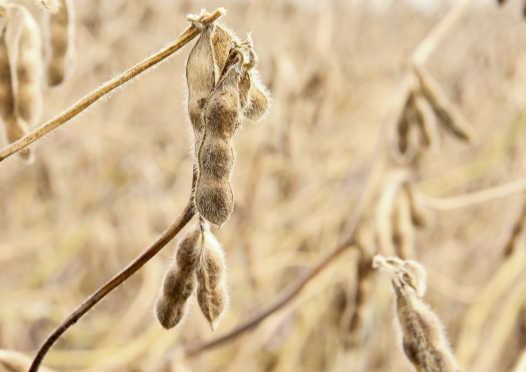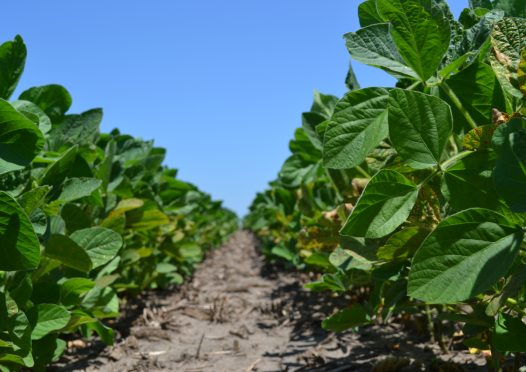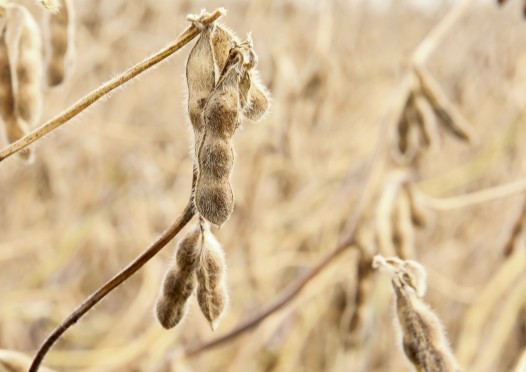ILSOYADVISOR POST
Yield Checks in Soybeans – Worth the effort or folly?
In theory estimating yields in soybeans is no different than corn and is simple math: number of seeds per plant X number of plants/number of seeds per pound/60 = bushels per acre. If that’s all there is to it, why is it so hard to yield check soybeans and why have so many of us decided the only way to yield check soybeans is with a combine?
Soybean yield is as simple as seeds/acre divided by seeds/pound divided by 60lbs/bu. The tricky part is getting a count of seeds per plant that represents the “average” plant in the field, then getting an accurate estimate of how many of those “average” plants there are, and then estimating what the “average” seed size will be. Each one of these steps is a likely source of significant error.
For example, seed size in soybeans can easily vary from 2500 seeds/pound to 3500 seeds per pound based on genetics and environment. The yield difference between 2500 and 3500 seeds/pound with an average of 100 seeds/plant and 100,000 plants per acre is nearly 20 bushels/acre! This does not mean that larger seeded soybeans yield more, but it does mean that if you are off on your estimated seed size it significantly throws off your yield estimate.
Estimating the number of seeds per plant is not easy either. This is typically done by counting pods and estimating the number of beans in each pod. Soybean pods can have from 1 to 5 seeds with 3 seeds per pod being the most common. If you see a lot of 1 and 2 bean pods on a plant your average seeds pod will be less than 3. Probably the most difficult part is making sure you count pods on enough plants to get a good representative average. If you only count a few plants your odds of getting close to the average are pretty low. You need to count pods on several plants in an area and several areas in the field. If you base your yield check on a plant with 60 pods but the average plants only have 40 pods, you can overestimate your yield by over 30 bushels/acre!
Last but certainly not least, and probably the most difficult, is determining your average population of plants per acre. If you planted 140,000 seeds per acre you might have 100,000 to 120,000 plants that are producing an average amount of seeds. There are always seeds that do not produce a plant and there are always plants that don’t produce enough seed to matter. If you assume 140,000 plants per acre when there are really only 100,000 with seed on them you can overestimate your yield by over 20 bushels/acre!
So … if you are off 20bu/acre due to seed size, and 30bu/acre due to pod/seed count per plant and 20bu/acre due to population it is easy to see how soybean yield checks often miss the mark by a mile. And there is much more variability in yield from plant to plant in a soybean field than in a corn field. It is also more difficult to accurately measure plant population in a soybean field. And more difficult to count the number of seeds per plant in soybeans than corn. Plus, it’s just harder to walk around in a soybean field if plants are lodged or in narrow rows, so you are less likely to sample across the field.
Another component of yield that yield checks don’t account for is harvest losses. If soybeans are too dry when they are harvested it is easy to lose 5 bushels or more per acre in water weight and increased shatter losses.
In the end you will probably decide it’s not worth the time and effort to estimate soybean yields since it isn’t accurately. The No. 1 determining factor in soybean yields is pod count. With a typical plant population of 100,000 plants per acre and an average seed size of 3,000 seeds per pound and an average of 2.5 seeds per pod each additional pod on a plant gives you roughly 1.4 more bushels per acre. By this you can see that pod counts of less than 40 per plant (unless you have very high populations or more than 2.5 seeds per pod) will not result in very high yields. Pod counts of 50 or more are generally excellent yielding soybeans. But again… you have to count the “average” plants, not the exceptional ones. The best plants in your field will likely have 60+ pods but there are many that have 10 or less.
Yield checks can be challenging and fun but also meaningless and even harmful if they give you the wrong impression. So, if you are going to do yield checks, take the time to do them correctly. Even then, take the results with a grain of salt until you get there with the combine to know for sure.
Lance Tarochione is a technical agronomist with Asgrow/DEKALB in west central Illinois. His work has focused on crop production, research and product development, and through his role at Monsanto he currently supports the Asgrow and DEKALB brands in seven counties in western Illinois.




Comments
Add new comment